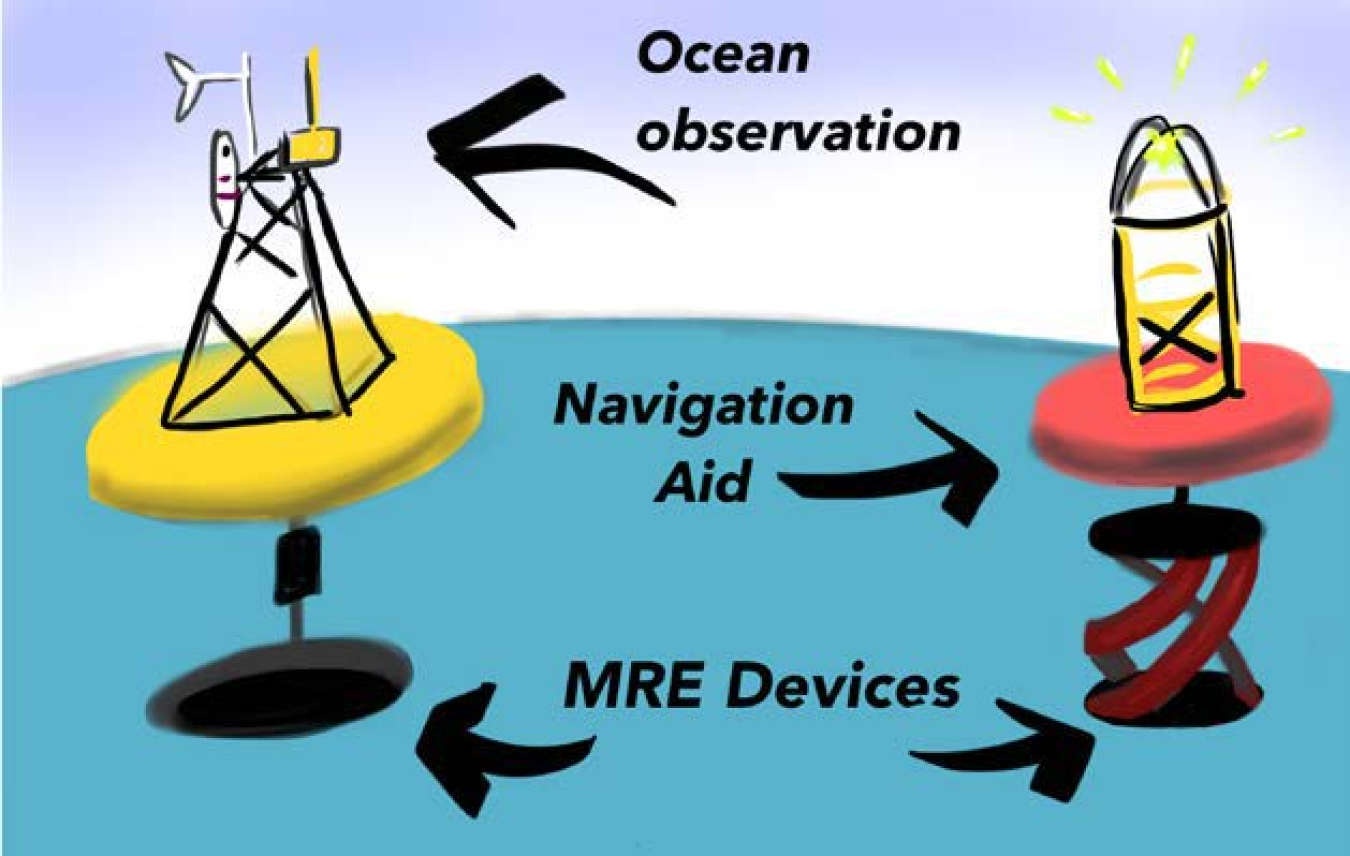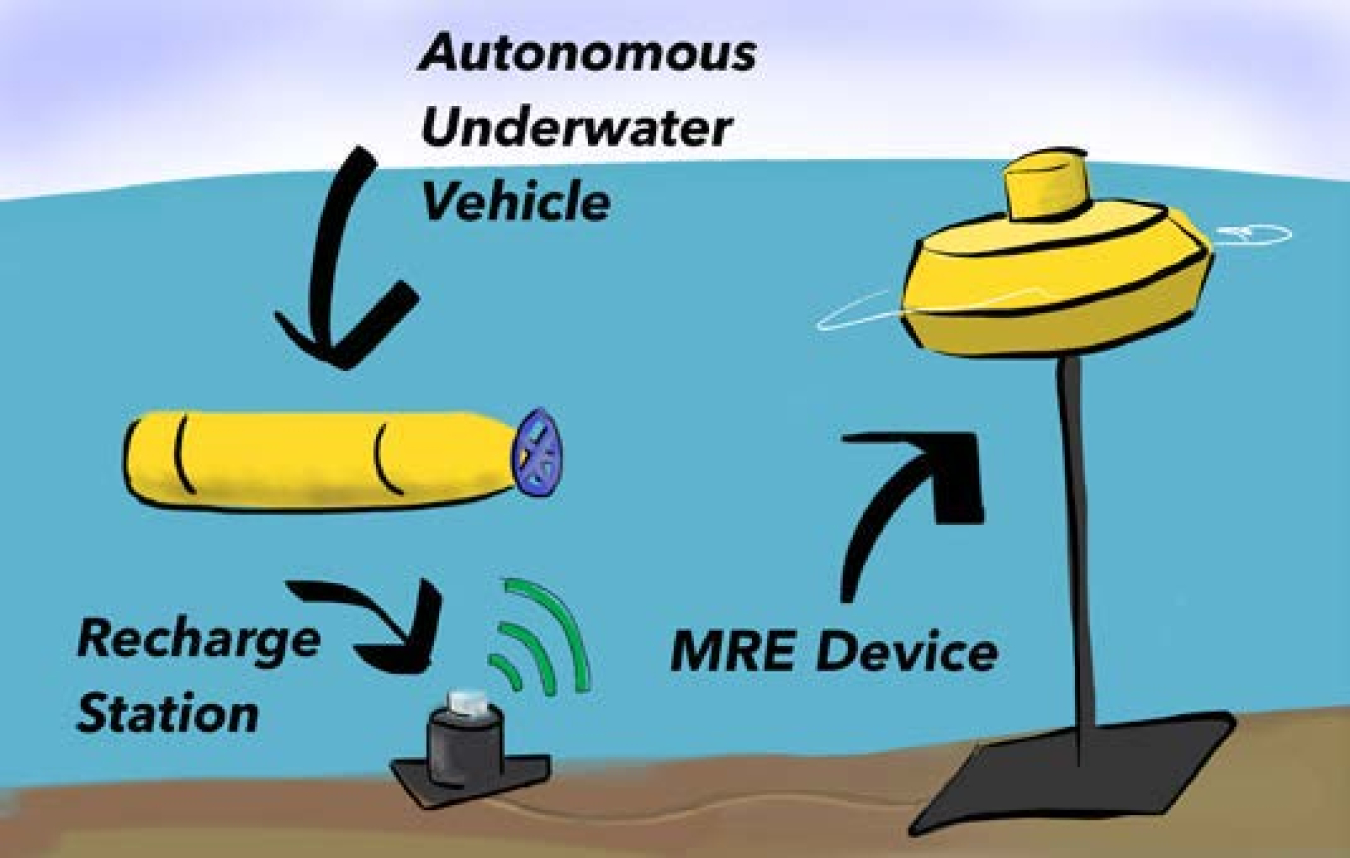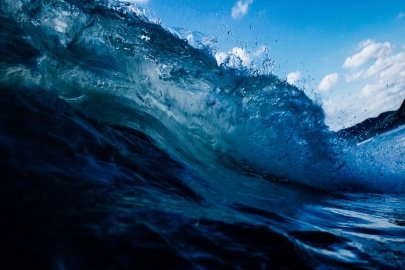As a focus area within the Powering the Blue Economy initiative, Power at Sea targets energy innovation to both augment existing offshore activities and enable future offshore missions or markets. Case studies identifying end-user needs are instrumental in pinpointing foundational R&D projects and building a better understanding of the engineering and R&D challenges for these applications. This deep analysis of customer needs—and identification of R&D opportunities to address them—applies to marine energy integration into existing deep offshore platforms and applications as well as to future considerations for providing power at sea for new offshore activities.
The core focus areas within Power at Sea include defining energy needs for various activities or missions at sea, supporting development of prototypes that are ready in the near term and reduce design iteration timelines, and identifying potential commercialization pathways for novel solutions. Some of the major efforts related to Power at Sea goals include:
- Supporting Marine Energy-Powered marine carbon dioxide removal (mCDR) Technologies: Funding the development of innovative mCDR approaches or technologies, emphasizing their compatibility with marine energy sources to address the energy needs in situ, and promoting negative emissions technologies to mitigate climate change.
- Undertaking case studies that examine the functional requirements of existing applications, such as currently deployed ocean observing platforms, and identifying key challenges to the development of these systems for at-sea applications.
- Building on results of the joint NOAA-DOE Ocean Observing Prize, launched in 2019, to advance the development of marine-energy-powered ocean observation platforms, including those that can charge autonomous underwater vehicles.
- Developing deployment-ready prototypes in partnership with the ocean observing community, including working with federal partners like NOAA to build systems that meet end-user needs.
- Advancing R&D and know-how to develop devices to serve multiple end uses. For example, a marine energy system could be deployed to service multiple applications, such as ocean observing and aquaculture through electricity delivery.
Power at Sea

Figure 2.1. Marine renewable energy (MRE) application overview for ocean observation. | Molly Grear, PNNL
Nearly 80% of the oceans have not been explored or mapped. New instruments, platforms, and tools are being developed to change this. And yet, the use of ocean instrumentation is often limited by battery capacity, data storage, and transmission to shore. The amount of data that can be collected and transmitted by weather buoys, profiling instruments, tsunami warning devices, and other systems—as well as the time they can remain at sea unattended—is limited. Marine energy could meet these needs and has unique advantages for at-sea power generation.
Download the chapter about Ocean Observation and Navigation >>

Figure 2.1. Marine renewable energy (MRE) application overview for ocean observation. | Molly Grear, PNNL
Ocean observation beneath the sea’s surface can be conducted by underwater vehicles that are remotely operated (drones) or preprogrammed to perform tasks (robots). Underwater vehicles offer many advantages for underwater exploration and mapping, but their mission ranges and durations can be limited by battery power capacity. Powering underwater charging and docking stations with marine energy could solve this problem.
Download the chapter about Underwater Vehicle Charging >>

Figure 4.1. Marine renewable energy application overview for offshore marine aquaculture. | Molly Grear, PNNL
Aquaculture—the cultivation of finfish, shellfish, crustaceans, and seaweeds—can occur in coastal, deepwater, and offshore areas. Offshore aquaculture operations require energy to power equipment, automatic fish feeders, refrigeration, and crew living quarters. Aquaculture facilities could be powered by marine energy—particularly wave energy converters that can be integrated with aquaculture facilities.
Download the chapter about Offshore Marine Aquaculture >>

Figure 5.1. Marine renewable energy application overview for a macroalgae farm. | Molly Grear, PNNL
Growing seaweed and other algae at commercial scale at sea has many advantages. It doesn’t require land, irrigation systems, or added nutrients or fertilizers. And marine algae can be used for everything from biofuels to animal feed. Marine renewable energy, generated by wave energy converters, could power the equipment, refrigeration, and vehicle recharging required by large-scale algae growing and harvesting operations at sea.
Download the chapter about Marine Algae >>

Figure 6.1. Marine energy application overview for mining seawater. | Molly Grear, PNNL
Seawater can be mined for minerals, such as lithium and uranium, and gases such as carbon dioxide, hydrogen, and oxygen. While most systems for extracting these resources from seawater are in the early stages of development, marine energy could advance seawater mining opportunities by powering machinery for extracting elements, pumping seawater, and safety and monitoring equipment.
Download the chapter about Mining Seawater Minerals and Gases >>
Powering the Blue Economy News & Publications
WPTO's Marine Energy e-newsletter shares news and updates on tools, analysis, and emerging technologies to advance marine energy.
WPTO's e-newsletter brings hydropower and marine energy funding opportunities, events, publications, & activities directly to your inbox.











